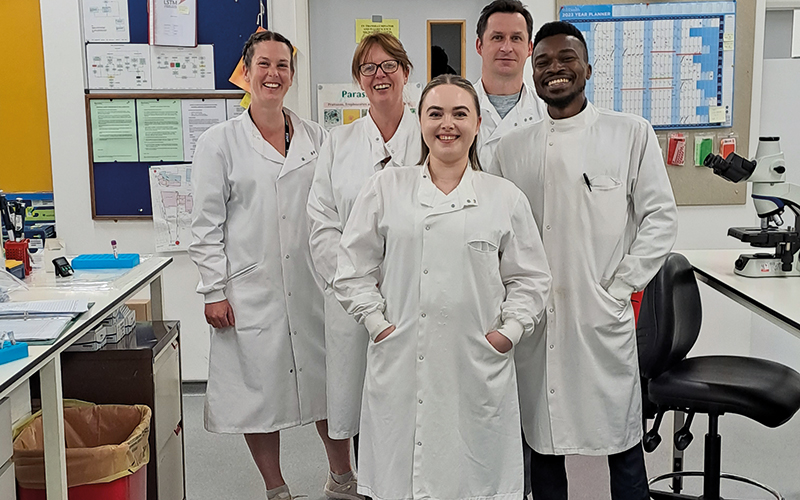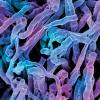Unit Manager Jayne Jones gives a guided tour of her laboratory at the Liverpool School of Tropical Medicine.

The Clinical Diagnostic Parasitology Laboratory (CDPL) sits within the clinical sciences department of Liverpool School of Tropical Medicine (LSTM).
It provides a specialist diagnostic parasitology service to aid clinical diagnosis. Samples are received from many streams, including hospitals, clinics and health professionals locally and throughout the UK. The unit has a close relationship with the local infectious disease team within the Liverpool University Hospitals NHS Foundation Trust and hosts an NHS tropical outpatient clinic for the trust.
LSTM was the first institution in the world to be dedicated to clinical parasitology research and teaching, and is celebrating its 125th anniversary this year. Liverpool was an ideal port location for trade with West Africa in the late 19th century; this resulted in many patients suffering from diseases such as malaria arriving at the local hospitals. Medical officers started to examine entire ships’ crews, which resulted in the call for the establishment of a school specialising in tropical medicine, hence the formation of CDPL.
CDPL offers a wide variety of tests utilising a wide variety of sample types, including: microscopy and concentration techniques for blood parasites, including malaria, filariasis and trypanosomiasis; microscopy and molecular techniques for faecal parasites, including intestinal protozoa, nematodes, cestodes and trematodes; microscopy, molecular and concentration techniques for the diagnosis of schistosomiasis; parasite antibody tests, including strongyloides, hydatid, schistosomiasis, malaria, filaria, fasciola and Entamoeba histolytica; examination of a variety of samples and tests for Leishmania diagnosis, including molecular test for diagnosis and speciation; cyst fluid examination for parasites and examination of whole worms and insects. The wide variety of tests offered and samples received ensures a dynamic workplace for the team with multiple hands-on tests being performed at the same time – there is no automation or analysers used within the unit.
Microscopy is an interesting area of the unit, utilising years of experience and expertise by the team to ensure a rapid accurate diagnosis for the patient. The most common parasites diagnosed via microscopy are Plasmodium falciparum, found in blood samples, and Giardia intestinalis, found in faecal samples. Some of the methods and stains used for malaria diagnosis are techniques over one hundred years old and are still the gold standard test for malaria diagnosis today. Some parasitic investigations are rare and the team need to ensure continued knowledge and competency for these tests that may only be requested once every 10 years. Microscopy leads to interesting team discussions, as the biomedical scientists are making diagnostic decisions very rapidly in the instance of malaria diagnosis, with no two microscopy samples being the same.
We are a small team of seven staff: one manager, one senior biomedical scientist, two biomedical scientists, one medical laboratory assistant and two part-time administrative staff. The team has more than 40 years’ collective service working at the CDPL, due to the interesting aspects of the work and the family feel of the team.
The team are starting to see slow change in geographical distribution of parasites due to a number of factors, including changes to how people travel and climate change. The number of samples being processed in the CDPL continues to increase year on year. LSTM clinical teams and researchers globally link together to enhance diagnostic methods for parasitology and will continue to be at the forefront of knowledge in parasitic and infectious diseases and diagnostics.
Image Credit | Jayne-Jones-Unit




